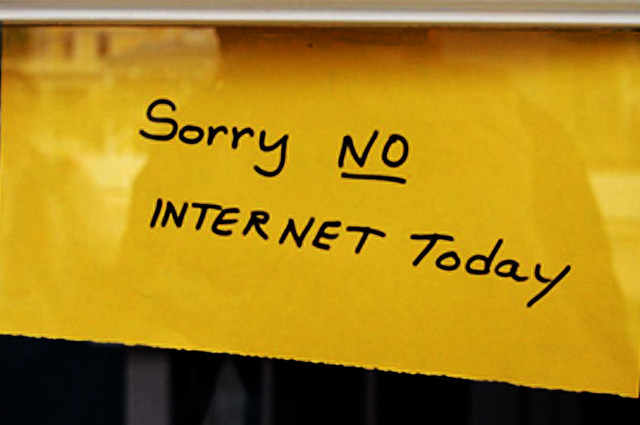While the
Internet of Things (IoT) accounts for approximately 1.9 billion devices today, it is expected to be more than 9 billion devices
by 2018—roughly equal to the number of smartphones, smart TVs, tablets, wearable computers and PCs combined. But, for the
IoT to scale beyond early adopters, it must overcome specific challenges within three main categories: technology, privacy/security and measurement.
Following are 12 hurdles that are hampering the growth of the IoT:
1. Basic Infrastructure Immaturity
IoT technology is still being explored, and the required infrastructure must be developed before it can gain widespread adoption. This is a broad topic, but advancement is needed across the board in sensors themselves, sensor interfaces, sensor-specific micro controllers, data management, communication protocols and targeted application tools, platforms and interfaces. The cost of sensors, especially more sophisticated multi-media sensors, also needs to shrink for usage to expand into mid-market companies.
2. Few Standards
Connections between platforms are now only starting to emerge. (E.g., I want to turn my lights on when I walk in the house and turn down the temperature, turn on some music and lock all my doors – that’s four different ecosystems, from four different manufacturers.) Competing protocols will create demand for bridge devices. Some progress is emerging in the connected home with Apple and Google announcements, but the same must happen in the enterprise space.
3. Security Immaturity
Many products are built by smaller companies or leverage open source environments that do not have the resources or time to implement the proper
security models. A
recent study shows that 70% of consumer-oriented IoT devices are vulnerable to hacking. No IoT-specific security framework exists yet; however, the
PCI Data Security Standard may find applicability with IoT, or the National Institute of Standards and Technology (NIST) Risk Management Guide for ITS may.
4. Physical Security Tampering
IoT endpoints are often physically accessible by the very people who would want to meddle with their results: customers interfering with their smart meter, for example, to reduce their energy bill or re-enable a terminated supply.
5. Privacy Pitfalls
Privacy risks will arise as data is collected and aggregated. The collation of multiple points of data can swiftly become personal information as events are reviewed in the context of location, time, recurrence, etc.
6. Data Islands
If you thought big data was big, you haven’t see anything yet.
The real value of the IoT is when you overlay data from different things -- but right now you can’t because devices are operating on different platforms (see #2). Consider that the connected house generates more than 200 megabytes of data a day, and that it’s all contained within data silos.
7. Information, but Not Insights
All the data processed will create information, eventually intelligence – but we aren’t there yet.
Big data tools will be used to collect, store, analyze and distribute these large data sets to generate valuable insights, create new products and services, optimize scenarios and so on.
Sensing data accurately and in timely ways is only half of the battle. Data needs to be funneled into existing back-end systems, fused with other data sources, analytics and mobile devices and made available to partners, customers and employees.
8. Power Consumption and Batteries
50 billion things are expected to be connected to the Internet
by 2020 – how will all of it be powered? Battery life and consumption of energy to power sensors and actuators needs to be managed more effectively. Wireless protocols and technologies optimized for low data rates and low power consumption are important. Three categories of wireless networking technologies are either available or under development that are better suited for IoT, including personal area networks, longer-range sensors and mesh networks and application-specific networks.
9. New Platforms with New Languages and Technologies
Many companies lack the skills to capitalize on the IoT. IoT requires a loosely coupled, modular software environment based on application programming interfaces (APIs) to enable endpoint data collection and interaction. Emerging Web platforms using
RESTful APIs can simplify programming, deliver event-driven processes in real time, provide a common set of patterns and abstractions and enable scale. New tools, search engines and APIs are emerging to facilitate rapid prototyping and development of IoT applications.
10. Enterprise Network Incompatibility
Many IoT devices aren’t manageable as part of the enterprise network infrastructure. Enterprise-class network management will need to extend into the IoT-connected endpoints to understand basic availability of the devices as well as manage software and security updates. While we don’t need the same level of management access as we do to more sophisticated servers, we do need basic, reliable ways to observe, manage and troubleshoot. Right now, we have to deal with manual and runaway software updates. Either there’s limited or no automated software updates or there are automatic updates with no way to stop them.
11. Device Overload
Another issue is scale. Enterprises are used to managing networks of hundreds or thousands of devices. The IoT has the potential to increase these numbers exponentially. So the ways we currently procure, monitor, manage and maintain will need to be revisited.
12. New Communications and Data Architectures
To preserve power consumption and drive down overall cost, IoT endpoints are often limited in storage, processing and communications capabilities. Endpoints that push raw data to the cloud allow for additional processing as well as richer analytics by aggregating data across several endpoints. In the cloud, a "context computer" can combine endpoint data with data from other services via APIs to smartly update, reconfigure and expand the capabilities of IoT devices.
The IoT will be a multi-trillion industry by 2020. But entrepreneurs need to clear the hurdles that threaten to keep the IoT from reaching its full potential.
This article was co-written with Daniel Eckert. The article draws on PwC's 6th Annual Data IQ Survey. The article first appeared on LinkedIn.

